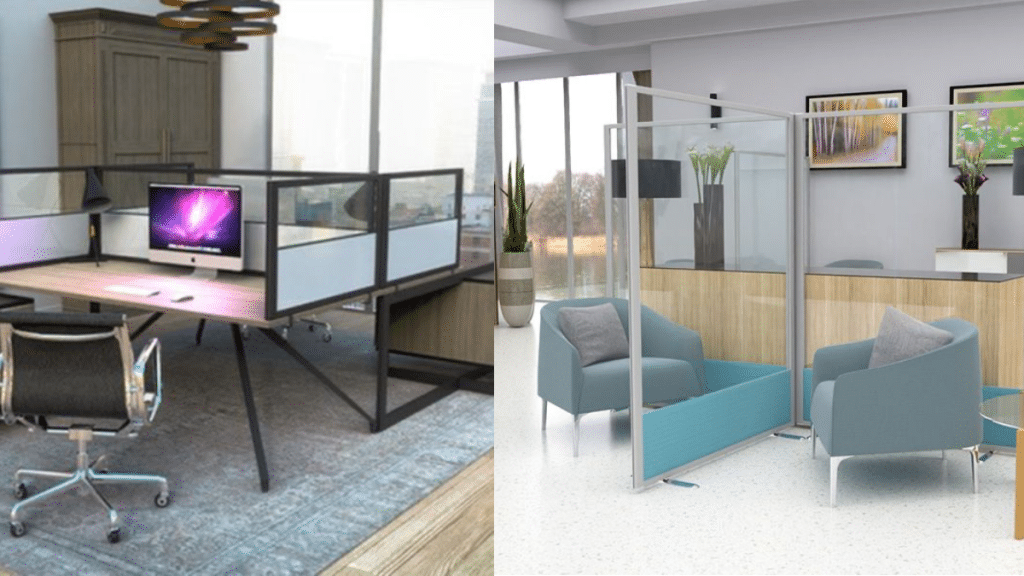When creating office screens, we are often asked if the glazed screens include glass. As part of the manufacturing process we use Perspex and here are the reasons why.
At a glance it’s easy to confuse glass for Perspex and visa versa, but looking into the detail of each product it’s possible to see the differences and where the Perspex material is surprisingly more effective.
Light weight
When designing office screens we have to consider the weight and how moveable the panels can be. The lightweight additional of clear or frosted acrylic doesn’t bog down the weight of the partition screens, and makes it possible for the screens to be moved when the office is being configured.
Strength
Longevity is the aim of a partition screen and in reality should last for years. Perspex offer a strength that is more resistant to impact than glass, so if the Perspex panel was to break, it wouldn’t shatter in to sharp pieces, which could be something to consider on the health and safety side of things.
Transparency
When you think of glass you assume the glass panel is 100% clear and the that maximum light is transmitted. In actual fact Perspex or glass don’t have a 100% record for the amount of light transmitted, but Perspex transmits 92% over the 90% that clear glass offers.
Cost Effective
As a UK manufacturer and being aware of price increases, we must ensure the best possible price can be provided to our customers. Perspex is not only incredibly high quality, but ensures the cost of individual partition screens can be kept as low as possible.
Resistance to weather
Whilst the partition screens aren’t designed for outdoor use, the fact that Perspex can remain in great condition outdoors for 10 years shows the extent of the durability. So, when positioned, in a warm office space, the Perspex will thrive for years to come.
Eco-friendly
In a time when understanding the reusability and recyclability of a product is at an all time high, Perspex can be recycled back to it’s original raw material.


